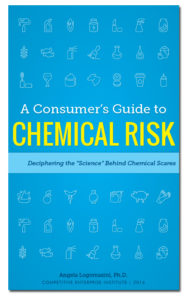Myriad news headlines suggest that trace chemicals in consumer products are dangerous based on epidemiological studies that rely on small population samples. Because these studies are often really inconclusive and because the news reports do not rely on the weight of the evidence available, media reports often offer misleading information about actual risks.
The size of the study sample has an important impact on the weight of the study findings, with smaller samples more likely to discover associations by mere accident. A study that includes more than 1,000 participants exposed to high levels of a chemical is stronger than one assessing exposure among a sample size of only 100. Furthermore, one small study is not made stronger if other studies with small samples report the same results. Small- scale studies are produced, largely because of the cost associated with collecting more data, but they are of limited value, and consumers should be wary of claims associated with such studies.
Researchers face a number of other challenges to establishing the validity of their findings. These include challenges associated with finding a truly random sample, confounding factors, recall bias, and, researcher bias.
Browse the terms on the sidebar of this webpage for more information and/or download a copy of A Consumer’s Guide to Chemical Risk: Deciphering the “Science” Behind Chemical Scares.


